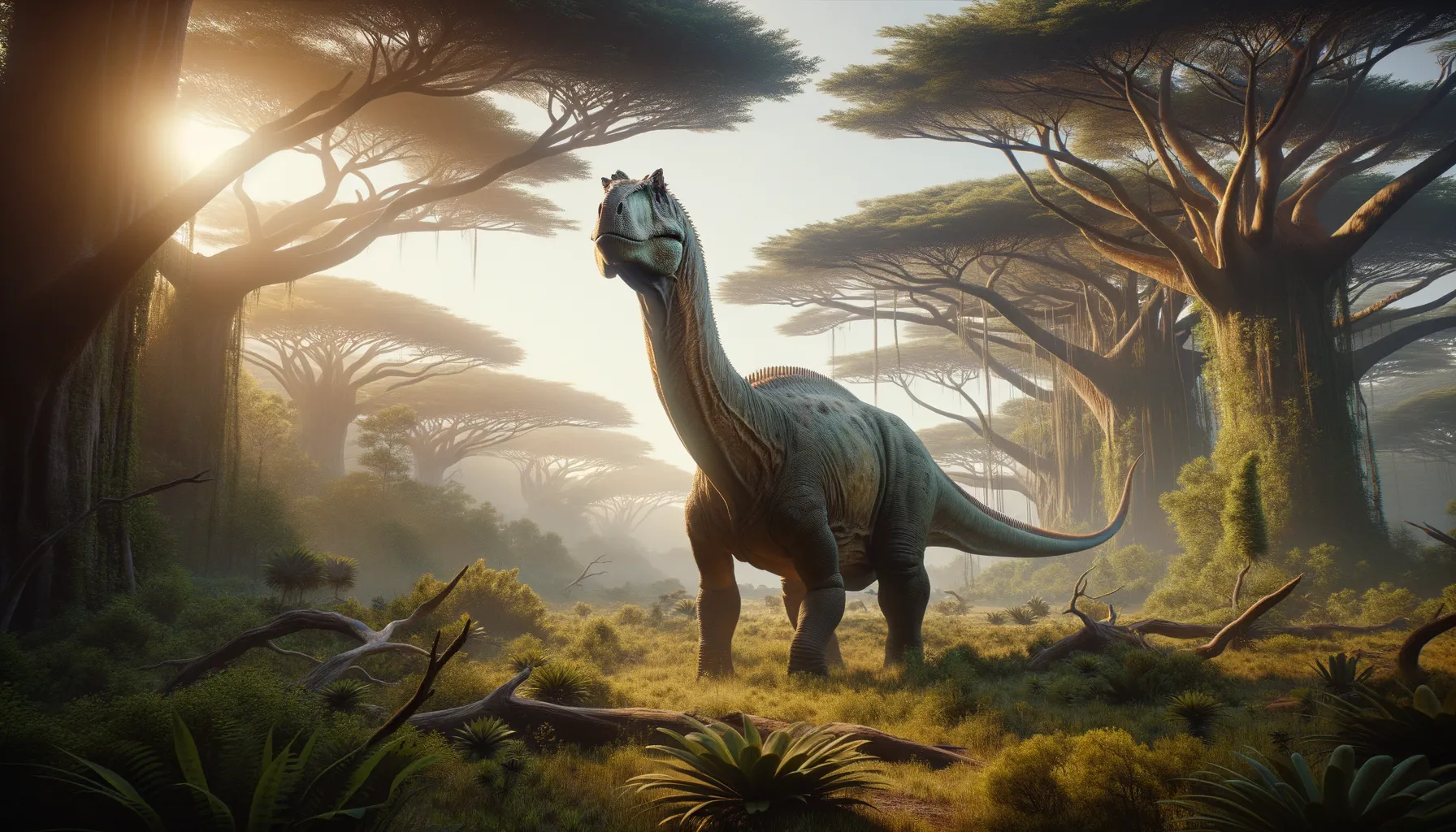
Padillasaurus
The gentle giant of ancient woodlands.
Period
Cretaceous
Length
Reached lengths of up to 16 meters.
Height
Approximately 10 meters tall.
Weight
Estimated to weigh around 40 tons.
Padillasaurus was a large, herbivorous dinosaur that roamed the ancient landscapes of what is now South America during the early Cretaceous period. As a sauropod, it had a long neck and tail, which allowed it to reach vegetation high in the trees. Its massive size and gentle nature made it a quintessential friendly giant of its time.
Diet
Padillasaurus primarily fed on a variety of plants. Its long neck enabled it to reach high vegetation, similar to how modern giraffes feed. This enabled it to graze from a wider range of plant life than many of its contemporaries.
Hunting
As a herbivore, Padillasaurus did not hunt for prey. Instead, it foraged for various plant species, using its size to reach food sources inaccessible to smaller herbivores.
Environmental challenges
Padillasaurus faced environmental challenges such as fluctuating food availability due to climate changes. Being a large animal, it required vast amounts of plant material to sustain itself. Predatory threats were also a constant challenge, though its size offered some protection. Additionally, environmental shifts could have impacted the stability of its habitat, leading to longer migration in search of resources.
Speed
Relatively slow compared to other dinosaurs.
Lifespan
Estimated around 30 to 40 years.
First discovery
Discovered in Colombia by Carlos Padilla.
Fun Facts
- Padillasaurus was a massive dinosaur that lived during the Early Cretaceous period, around 130 million years ago.
- It was a type of sauropod, which means it was long-necked and similar to famous dinosaurs like Brachiosaurus and Diplodocus.
- Padillasaurus was discovered in what is now Colombia, making it one of the few well-known dinosaurs from that region.
- This dinosaur could have been up to 50 feet long, making it a giant even among other sauropods.
- Padillasaurus is named after Carlos Bernardo Padilla, a Colombian geologist who made significant contributions to the field.
- The fossils of Padillasaurus were first discovered in the 1990s, but it wasn't formally named and described until 2015.
- Padillasaurus might have lived in a lush, forested environment, feeding on plants with its long neck helping it reach high branches.
Growth and Development
Padillasaurus hatched from eggs and grew rapidly to avoid predation. During the early stages of life, young Padillasaurus might have been more vulnerable but likely grew quickly to attain their majestic size. As they matured, their slow-paced growth eventually steadied, allowing them to reach full size and strength. This development was crucial for thriving in their vegetative environments.
Habitat
Padillasaurus lived in lush, forested environments with ample vegetation. These habitats were rich in plant life which provided food and shelter. The forests offered protection from potential predators, while rivers and lakes supplied necessary water. Its habitat needs likely included a stable climate with abundant plant sources throughout the year.
Interaction with other species
While primarily peaceful, Padillasaurus shared its environment with other herbivores and potential predators. Its size made it an unlikely target for most predators, though it may have competed for resources with other large herbivores. Communication and social interaction might have occurred within herds, providing safety in numbers.
Natural lifespan
In optimal conditions, Padillasaurus could live up to 40 years.
Reproduction
Reproduction involved laying eggs, with nests possibly located in protected areas. Little is known about its nesting behavior, but like many dinosaurs, eggs were likely incubated using environmental heat. After hatching, young Padillasaurus would have been cared for to some extent by adults, benefitting from group protection, though they remained vulnerable during early development stages.
Social behaviour
Padillasaurus may have lived in herds for protection against predators. These social groups facilitated resource sharing and ensured young members' safety. Communication might have included vocalizations or movements to maintain group cohesion. Despite its size, its social nature reduced isolation risks.
Fossil locations
Padillasaurus fossils are predominantly found in Colombia. These discoveries offer significant insights into the diversity of Cretaceous-period dinosaurs in South America. Ongoing excavation and research continue to provide new information about its life and environment, drawing interest from paleontologists worldwide.
